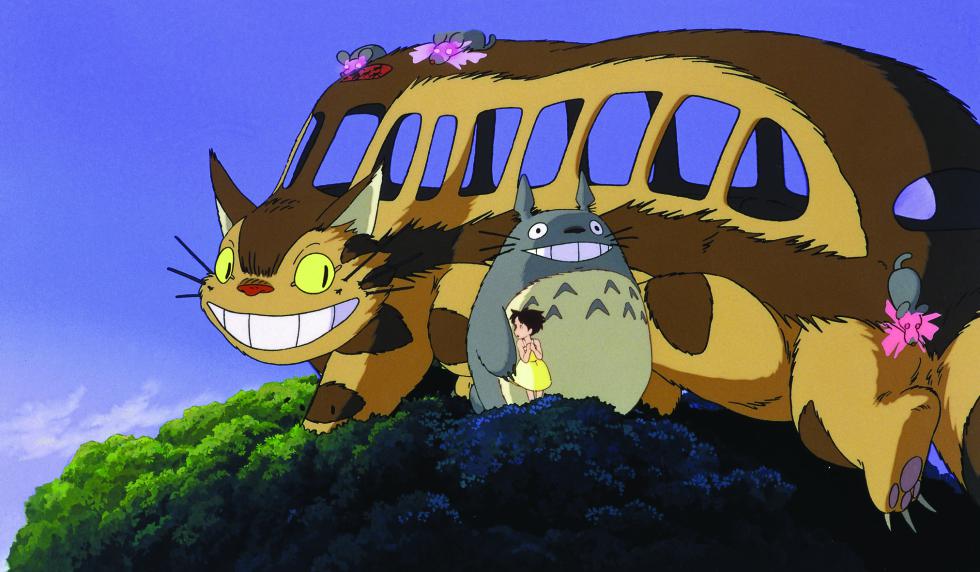As we turn the corner into March, the kids have headed back to school, leaving the rest of New England to get back to the important business of shoveling out parking spaces and shoring up roofs creaking under the weight of ice dams. But if this long winter is starting to seem like nothing but shades of white, Amherst Cinema’s Family Films series continues to provide a bit of welcome color to the weekends.
The series, which got underway with a school-vacation screening of a Looney Tunes review, brings family-friendly fare to the Amherst screen for 10 a.m. Saturday shows (aping the classic TV block of the cartoons-and-cereal set) at a general admission price of just $5 a head. For anyone coming down with a case of cabin fever this season — it’s not just for parents — it’s a great reason to get out of bed in the morning.
This week, the cinema hosts the Hayao Miyazaki classic My Neighbor Totoro, a story about the power of nature and the sad obliviousness with which we overlook it. Miyazaki has always been an impassioned, if subtle, spokesman for our natural world, and most of his films contain some suggestion that we humans are much smaller than we’d like to believe. But Totoro is perhaps the film that most plainly lays it out.
It tells the story of Satsuma and Mei, two girls who move with their father to a home in the country that borders on wide swaths of forest. As they play in the woods — something, Miyazaki hints, that adults could do with a bit more of — they discover that the forest is home to a family of Totoros, a species of gentle giants who live in one of the forest’s camphor trees. Only visible to children, the Totoros (which resemble giant panda bears with pointy rabbit ears) take a shine to the young girls, and introduce them to the secret adventures the forest holds—and also to Catbus, a giant, furry cat with a hollow body that serves as public transport in the forest.
Perhaps by the time this column reaches the street we’ll have put the snow and cold behind us for another year. But whether or not we’re still digging out, Miyazaki’s great movie can remind us that nature, even at its most terrible, can hold a unique kind of beauty. We should enjoy it while we can.
And for those who find themselves eager for more of Miyazaki, his work has an inspired fan base on the Internet, where amateur filmmakers, animators, musicians, and more post their own work inspired by the director’s vision. Film site Vimeo hosts an impressive number of shorts about or based on Miyazaki’s films, and a quick YouTube search for “Miyazaki Moebius” will call up not only an interview where Miyazaki and the great French artist Moebius discussing their cross-pollination (youtu.be/2L0YgdIpXas), but smaller moments, too, such as a behind the scenes look at Miyazaki cooking ramen for his animators during a long night of editing.
Also this week: Sometimes described as “the best Hitchcock movie Hitchcock never made,” Stanley Donen’s 1963 film Charade is a personal favorite that I’ve long felt is due for rediscovery. Starring Cary Grant and Audrey Hepburn (along with Walter Matthau and a fabulous supporting cast), the film — about a woman whose murdered husband has left behind a mysterious treasure — seamlessly blends thriller, romance, and comedy in a way many films since have tried to do. The difference is that Charade succeeds.
Never too light to lose its edge, but never so dark as to seem dreary, it’s the sort of movie that is a perfect product of its time (and indeed, a 2002 remake starring Mark Wahlberg was a bomb). This week, it plays on the big screen at Cinemark theaters on Sunday and Wednesday. Catch it if you can.•
Jack Brown can be reached at cinemadope@gmail.com.





